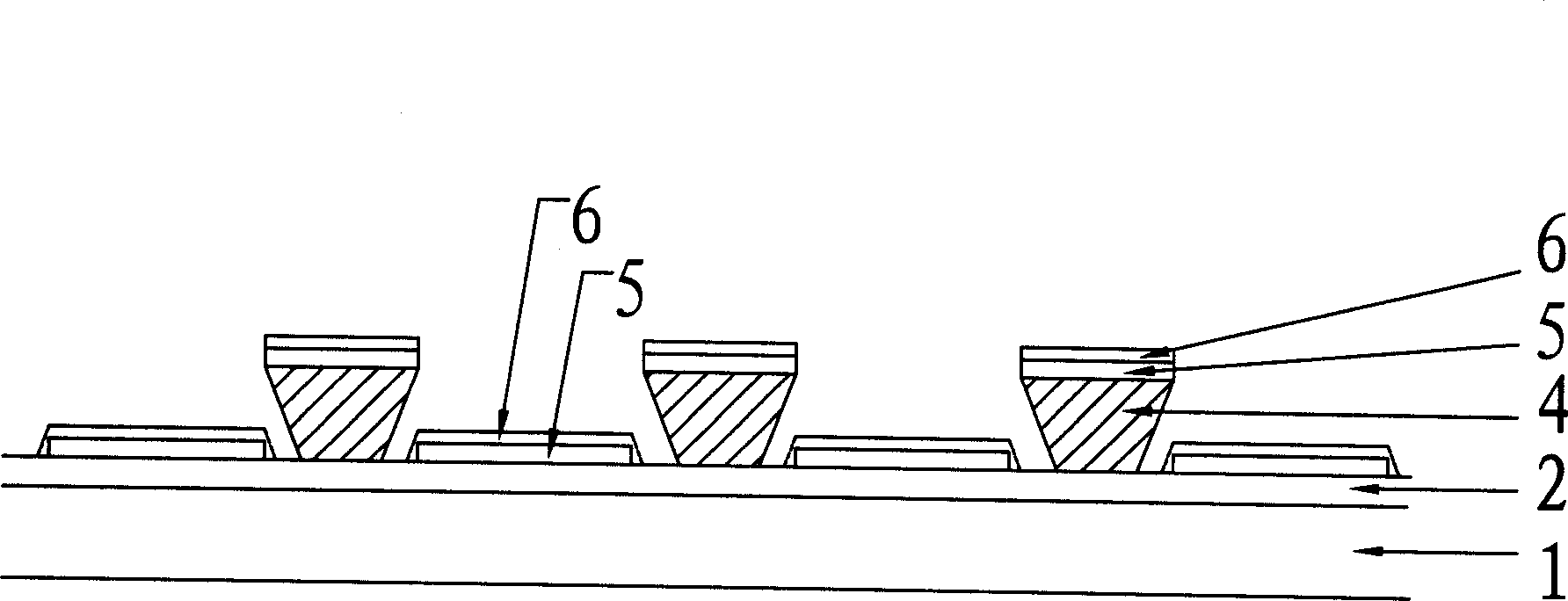Organic electrofluorescence device and producing mehtod thereof
An electroluminescent device and organic technology, which is applied to electroluminescent light sources, electric light sources, electrical components, etc., can solve the problem of not being able to ensure the uniformity of the organic functional layer evaporation at the same time. The metal layer is complete, the isolation effect is poor, and the pixel points are short-circuited. and other problems, to achieve the effect of improving life and luminous uniformity, improving life, and reducing the number of processes.
- Summary
- Abstract
- Description
- Claims
- Application Information
AI Technical Summary
Problems solved by technology
Method used
Image
Examples
Embodiment 1
[0141] (The entire preparation process of OLED is carried out in the purification workshop.) Use UV and lotion containing surfactant to clean and dry the ITO glass with a square resistance of 15Ω. The film thickness of ITO is 170nm. A group of parallel and separated straight lines with a line width of 400 μm and a line gap of 30 μm. Wash and dry again, and then spin-coat the first layer of organic insulating material photosensitive PI DL-1000 with a film thickness of 1.5 μm, and bake in a convection oven at 125°C for 25 minutes. The first layer is exposed but not developed, and the exposure pattern is a network structure, that is, only the light-emitting area and the lead connection area of the pixel point of the device are exposed. The width of the line parallel to the ITO line is 45 μm, and the line perpendicular to the ITO line The width is 40 μm. Then continue to spin-coat the second layer of insulating material negative photoresist ZPN1168-30 on the first organic insul...
Embodiment 2
[0142] (The entire preparation process of OLED is carried out in the purification workshop.) Use UV and lotion containing surfactant to clean and dry the ITO glass with a square resistance of 5Ω. The ITO film thickness is 200nm. A group of parallel and separated straight lines with a line width of 200 μm and a line gap of 20 μm. Wash and dry again, and then spin-coat the first layer of organic insulating material photosensitive PI DL-1000 with a film thickness of 1.2 μm, and bake in a convection oven at 125°C for 25 minutes. Immediately continue to spin-coat the second layer of organic insulating material negative photoresist Tlor-n on the first organic insulating layer with a film thickness of 4 μm, and bake in a hot plate at 110° C. for 90 s. Then the second layer is exposed, the exposure pattern is a group of parallel and separated straight lines perpendicular to the ITO lines, the line width is 15 μm, and baked in a hot plate at 110°C for 60s. Use 2.38% TMAHO solution to ...
PUM
 Login to View More
Login to View More Abstract
Description
Claims
Application Information
 Login to View More
Login to View More - R&D
- Intellectual Property
- Life Sciences
- Materials
- Tech Scout
- Unparalleled Data Quality
- Higher Quality Content
- 60% Fewer Hallucinations
Browse by: Latest US Patents, China's latest patents, Technical Efficacy Thesaurus, Application Domain, Technology Topic, Popular Technical Reports.
© 2025 PatSnap. All rights reserved.Legal|Privacy policy|Modern Slavery Act Transparency Statement|Sitemap|About US| Contact US: help@patsnap.com



